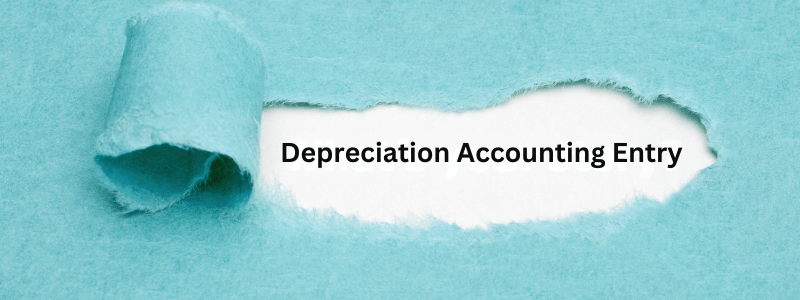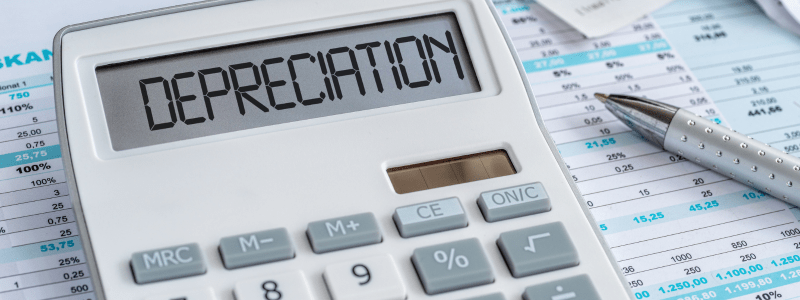
Depreciation is a fundamental concept in accounting that represents the reduction in the value of tangible assets over time. It’s a non-cash expense that provides a systematic method to allocate the cost of an asset over its useful life. This article will explore everything you need to know about depreciation accounting entries, including methods, calculations, and their impact on financial statements.
Understanding Depreciation
What is Depreciation?
Depreciation is the process of allocating the cost of a tangible asset over its useful life. This accounting method helps reflect the asset’s wear and tear, usage, and age.
Types of Depreciable Assets
Assets that can be depreciated include machinery, vehicles, buildings, and equipment. These assets must have a useful life exceeding one year and be subject to wear and tear or obsolescence.
Why Depreciation is Necessary
Matching Principle
Depreciation ensures that the expense of an asset is matched with the revenue it generates over time. This principle aligns with the accrual accounting concept, where expenses are recorded in the period they occur, regardless of when the payment is made.
Reflecting Asset Value Over Time
Depreciation helps in accurately reflecting an asset’s book value on the balance sheet, which is essential for providing a true and fair view of the company’s financial position.
Methods of Depreciation
Straight-Line Method
The straight-line method is the simplest and most commonly used depreciation method. It involves evenly spreading the cost of an asset over its useful life.
Declining Balance Method
The declining balance method accelerates depreciation, allowing larger expenses in the earlier years of the asset’s life. This method is suitable for assets that lose value quickly.
Sum-of-the-Years’ Digits Method
This method also accelerates depreciation but uses a different calculation approach. It involves adding up the years of an asset’s useful life and then applying a fraction to the remaining book value.
Units of Production Method
The units of production method bases depreciation on the actual usage or production output of the asset. This method is ideal for machinery and equipment that depreciate with use.
Calculating Depreciation
Formulas for Different Methods
- Straight-Line Method: (Cost – Salvage Value) / Useful Life
- Declining Balance Method: Book Value at the Beginning of Year * Depreciation Rate
- Sum-of-the-Years’ Digits Method: (Remaining Life / Sum of the Years’ Digits) * (Cost – Salvage Value)
- Units of Production Method: (Cost – Salvage Value) / Total Units of Production * Units Produced
Examples of Depreciation Calculations
Let’s say a company purchases a machine for $10,000 with a salvage value of $1,000 and a useful life of 5 years. Using the straight-line method, the annual depreciation expense would be ($10,000 – $1,000) / 5 = $1,800.
Recording Depreciation in Accounting
Depreciation Expense Account
Depreciation expense is recorded on the income statement as an operating expense. This entry reduces the company’s taxable income.
Accumulated Depreciation Account
Accumulated depreciation is a contra-asset account on the balance sheet. It represents the total depreciation expense charged against an asset since its acquisition.
Journal Entries for Depreciation
To record depreciation, an accountant would make the following journal entry:
- Debit: Depreciation Expense
- Credit: Accumulated Depreciation
Impact of Depreciation on Financial Statements
Income Statement
Depreciation expense reduces net income, reflecting the cost of using fixed assets in revenue generation.
Balance Sheet
Accumulated depreciation reduces the book value of assets, providing a more accurate representation of their current worth.
Cash Flow Statement
Depreciation is a non-cash expense, so it doesn’t directly affect cash flow. However, it’s added back to net income in the operating activities section of the cash flow statement.
Depreciation and Taxation
Tax Depreciation vs. Book Depreciation
Tax depreciation often differs from book depreciation due to varying regulations and incentives provided by tax authorities. Companies may use accelerated depreciation methods for tax purposes to defer tax liabilities.
IRS Guidelines and MACRS
In the United States, the Modified Accelerated Cost Recovery System (MACRS) is the standard for tax depreciation. It allows for accelerated depreciation rates, providing tax benefits in the early years of an asset’s life.
Depreciation of Different Asset Types
Depreciation for Buildings
Buildings typically have a long useful life, often depreciated using the straight-line method over 27.5 to 39 years, depending on the type of property.
Depreciation for Vehicles
Vehicles are usually depreciated over a shorter period, commonly using the declining balance method due to their rapid loss of value.
Depreciation for Machinery and Equipment
Machinery and equipment can be depreciated using various methods, often based on their usage and wear and tear patterns.
Depreciation and Asset Disposal
Accounting for Sale of Assets
When an asset is sold, the difference between the sale price and its book value (cost minus accumulated depreciation) is recorded as a gain or loss on the income statement.
Accounting for Asset Retirement
If an asset is retired, any remaining book value is written off, and the accumulated depreciation is removed from the accounts.
Common Depreciation Mistakes
Overlooking Salvage Value
Failing to account for an asset’s salvage value can result in overstating depreciation expenses and understating net income.
Incorrect Useful Life Estimation
Estimating an incorrect useful life can lead to inaccurate depreciation calculations, affecting financial statements and tax reporting.
Advanced Depreciation Concepts
Impairment of Assets
Asset impairment occurs when the market value of an asset falls below its book value, necessitating a write-down to reflect its reduced worth.
Revaluation of Assets
Revaluation involves adjusting the book value of an asset to its current market value, often performed for financial reporting purposes.
Depreciation Software and Tools

Popular Depreciation Software
Software like QuickBooks, and Xero offer robust depreciation modules to automate calculations and ensure compliance with accounting standards.
Benefits of Using Software
Depreciation software simplifies complex calculations, ensures accuracy, and saves time, allowing accountants to focus on strategic tasks.
Conclusion
Depreciation accounting is essential for accurately reflecting the value of assets and ensuring compliance with accounting standards. Understanding the different methods and their impact on financial statements helps businesses make informed financial decisions.
FAQs
1. What happens if you don’t depreciate an asset?
If an asset isn’t depreciated, its cost won’t be allocated over its useful life, leading to overstated asset values and inaccurate financial statements.
2. Can depreciation be reversed?
No, depreciation cannot be reversed. However, if an asset is revalued or impaired, adjustments can be made to reflect its current value.
3. How does depreciation affect cash flow?
Depreciation itself doesn’t impact cash flow as it’s a non-cash expense. However, it reduces taxable income, potentially lowering tax payments and indirectly affecting cash flow.
4. What is the difference between amortization and depreciation?
Amortization is similar to depreciation but applies to intangible assets, such as patents and copyrights, while depreciation applies to tangible assets.
5. Can land be depreciated?
No, land cannot be depreciated because it doesn’t have a finite useful life and typically appreciates in value over time.
For a deeper understanding of accounting concepts, check out our detailed guide on WHAT IS NOT AN EXPENSE ACCOUNT?
